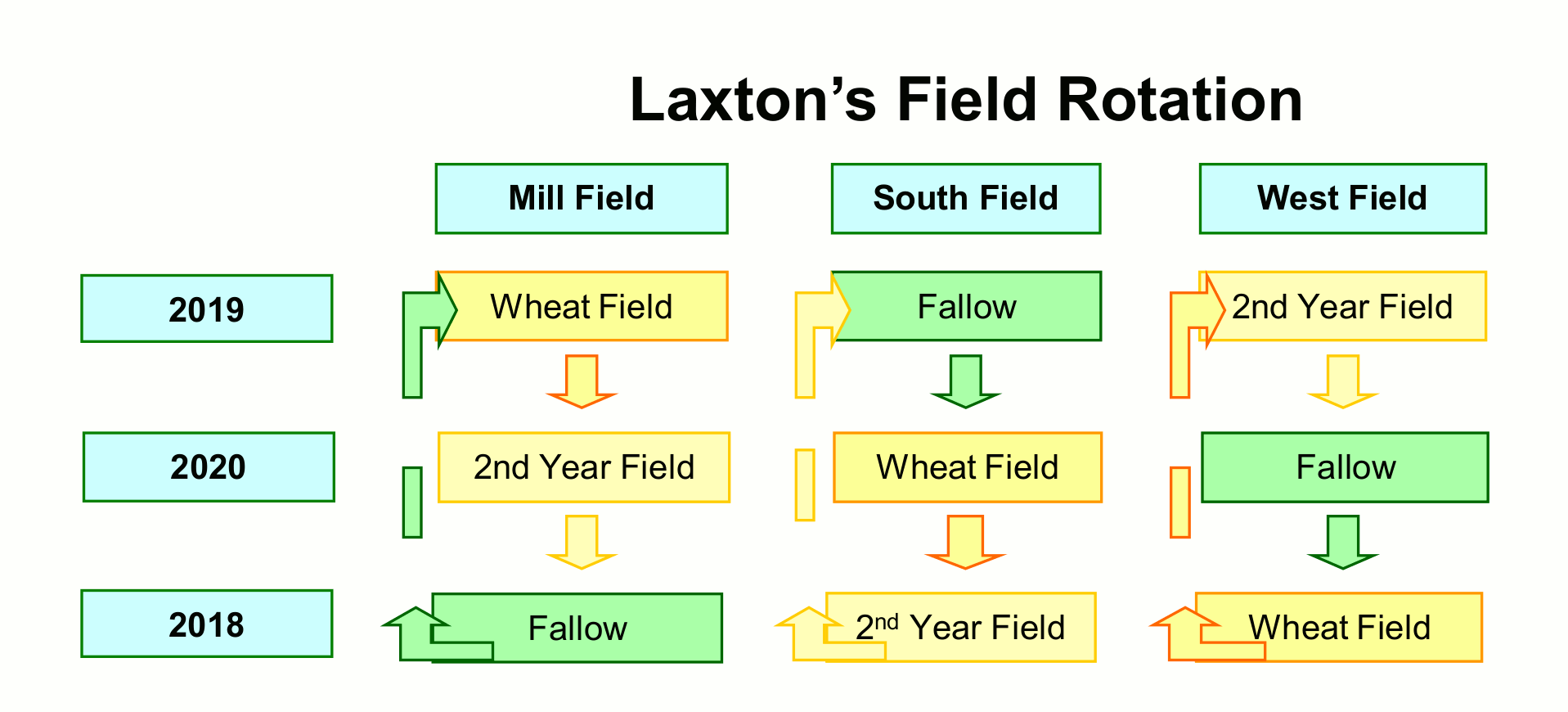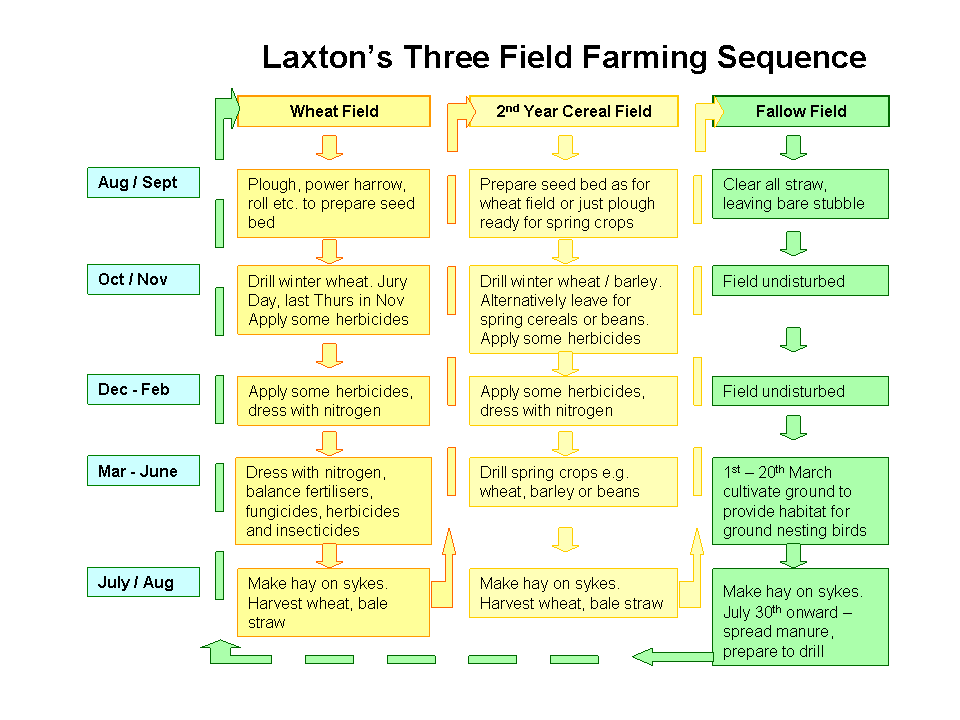|
The 3 Field Rotation System sees the cropping
pattern change in each field each year. There is no designated date for the
change. This is dependent upon the weather and other pressures. All farmers must
grow wheat on their strips in the wheat field, although they are free to choose
the variety and the fertiliser / weed control they use. Sprays have to be used
with care to avoid contamination of the sykes.
The second year field can grow a mixture of
crops. These include wheat, barley, oats, and beans, all of which may be winter
or spring sown. This gives rise to differences in the appearance of the crops
until near harvest.
During the fallow year
no crops are grown and the field is rested. The Countryside Stewardship criteria
specifies the management of the over winter stubble. Straw is removed from the
strips after harvest. The stubbles are left to regenerate naturally. Between 1st
and 20th March light cultivations are carried out to produce a suitable habitat
for ground nesting birds e.g. plover, partridge, and skylark. After 15th July
the strips in the fallow field can be prepared for winter wheat sowing in the
autumn.
The grass and
wildflowers which grow on the sykes is sold to the farmers for haymaking
at the annual Grass Sales.
Once the wheat field has been
harvested it becomes the 2nd year cereal field. The fallow field is
broken from July and prepared for drilling (sowing) as the wheat field
for the following season and the 2nd year cereal field, once harvested,
is cleared for its fallow season. Under the current stewardship
arrangements, this is also referred to as 'over winter stubble'. The
ground is left as it is cleared after harvest and then broken up by
harrowing before 20th March to create habitat for ground nesting birds
as described above.


|

